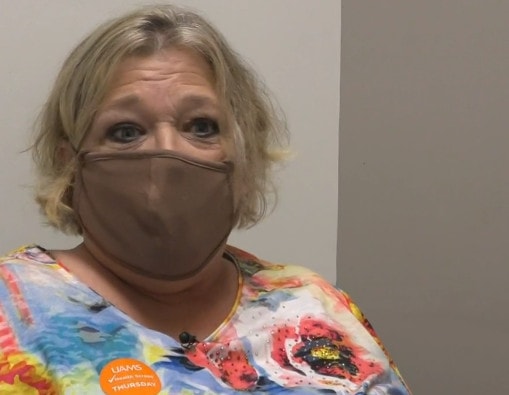View Larger Image

Cynthia Chapman speaks about her experience with the Ion Endoluminal Robotic Bronchoscopy System
Image by THV11
Lung Biopsy Robot at UAMS Detects Early-stage Cancer in Little Rock Woman
| A Little Rock woman can now breathe a little easier thanks to new technology at the University of Arkansas for Medical Sciences (UAMS).
Doctors at UAMS recently activated the first lung biopsy robot in Arkansas. The robot allows doctors to discover and biopsy previously undetectable cancerous nodules in the far reaches of the lungs.
Cynthia Chapman, 51, said she was living her normal life when she noticed she was starting to get short of breath more often.
“I was not smoking. It was just every day–I play with the grandkids. I had a normal life. I mean, I was starting to get shorter of breath, but now we understand why,” said Chapman, who was diagnosed with lung cancer in October.
She received help from Nikhil Meena, M.D., a pulmonologist in the Winthrop P. Rockefeller Cancer Institute who helped diagnose her with the Ion Endoluminal Robotic Bronchoscopy System.
Made by Intuitive, it was used at the hospital for the first time in September. The machine allowed Meena to find early cancerous nodules in the lungs of two patients.
Meena said the first patient had a nodule that was unable to be biopsied properly by earlier technology. The second patient had multiple small nodules, two of which were found to be cancerous.
The Ion Endoluminal Robotic Bronchoscopy System is a machine that has a camera small enough to fit down the throat, with the ability to reach into the smaller regions of the lungs.
“So, your lungs are basically upside-down trees. So, there’s a fruit or a nodule on that tree. It’s usually far away on one of the branches,” said Meena. “So, not only do you need to climb on to the right branch, you have to also go far away into that branch to grab that fruit or nodule.”
The machine gives doctors real time video that’s able to detect anything unusual in the lungs.
“Previously we had bronchoscopes which were bigger in size and you could get on the right branch, but you couldn’t get far enough down the branch, or you were not able to get on to the right branch because your bronchoscope didn’t move a certain way,” said Meena.
Doctors found a nodule on Chapman’s lungs two years ago and began to monitor it. A new suspect nodule was seen on imaging.
With the new technology, they were able to see it developing into cancer.
“I mean, I’m just thankful that they were able to find it as early as they did because it’s still in the first stage, so the survival rate is higher,” said Chapman, who had surgery Dec. 9.